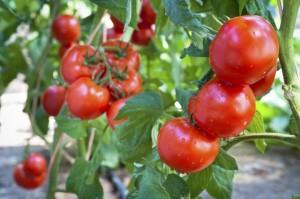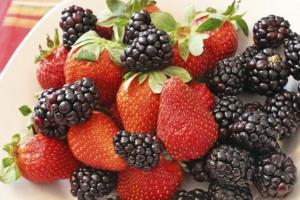
Pruning Tomatoes and Other July Gardening Tips
Pruning Tomatoes and Other July Gardening Tips
Charlie Nardozzi, Horticulturist and
Leonard Perry, UVM Extension Horticulturist
 Pruning tomato plants, removing strawberry “runners”, and fertilizing container annuals are some of the gardening activities for this month.
Pruning tomato plants, removing strawberry “runners”, and fertilizing container annuals are some of the gardening activities for this month.
To help your tomato plants direct all their energy into growing the fruit that’s already set, prune off some of the vines that contain flowers but no young fruit. Pinch off suckers growing from where the branches connect to the main stem (the leaf axils). Keep moisture levels even to prevent blossom end rot. Renew mulch if necessary.
Strawberry plants are in very active growth these days, and new “runners” or plants attached to the main one will proliferate. Remove runners to keep plants spaced according to the method you’re using so plants will put their energy into producing future fruit, instead of new runners. Left alone, a bed will turn into a mass of foliage and few berries.
Strawberries, raspberries, blackberries, cherries, and other fresh, very perishable fruit should be kept refrigerated and not washed until serving time. Green vegetables, however, such as broccoli, peas, and beans, as well as beets and carrots, should be washed before storing in the refrigerator.
If you have lots of produce, or have a CSA share or visit local farm stands, you may need to store produce for later in the season or into next winter. Freezing vegetables is an easy and quick means of storing for the long term, if you have spare freezer space. A spare chest freezer can quickly be filled during the growing season, and be worth the investment. You’ll save much from not having to buy produce at stores, eat healthy, and know the produce is fresh and local.
 Exceptions to freezing are green onions, lettuce and other salad greens, cucumbers, and tomatoes (except for juices and cooking). Make sure to use bags or containers listed for freezer use, as others don’t contain moisture and vegetables will dehydrate.
Exceptions to freezing are green onions, lettuce and other salad greens, cucumbers, and tomatoes (except for juices and cooking). Make sure to use bags or containers listed for freezer use, as others don’t contain moisture and vegetables will dehydrate.
Most vegetables (onions and sliced peppers are exceptions) need “blanching” prior to freezing to kill bacteria and stop enzymes that deteriorate produce. Simply set vegetables (I use cheesecloth or similar bags) in boiling water (a pound for a gallon of water), or suspend in a basket above steam for a short time. Then cool quickly in cold running water. The thicker or larger the fruit, the more time is needed. Shelled peas need about one and a half minutes, corn kernels 4 minutes, squash 3 minutes, sliced carrots about 2 minutes, and whole carrots about 5 minutes. You can find more details online (perrysperennials.info/articles/freezveg.html).
Any fertilizer you’ve applied to annual flowers in containers has probably washed out of the soil in rain, so give them another dose. Clip off spent blooms and cut some stems way back to encourage lots of new growth. Do this every couple of weeks.
If you come home to a dried-out container planting, don’t despair. Some plants will wilt dramatically, but come back once moistened. If the water you add from the top pours right through, place the entire container in a saucer or tray of water and let the water soak into the soil from below for and hour or so. If it’s still hot and sunny out, place the plant in a shady, cool spot for a few days. Remove damaged foliage and see if it develops new growth.
Other garden activities for this month include visiting local perennial nurseries to see what is new and in bloom (such as some of the great new coneflower colors), keeping hummingbird feeders filled and cleaned often, and checking plants often for pests and disease.
Receive your complimentary Relocation guide and magazine

